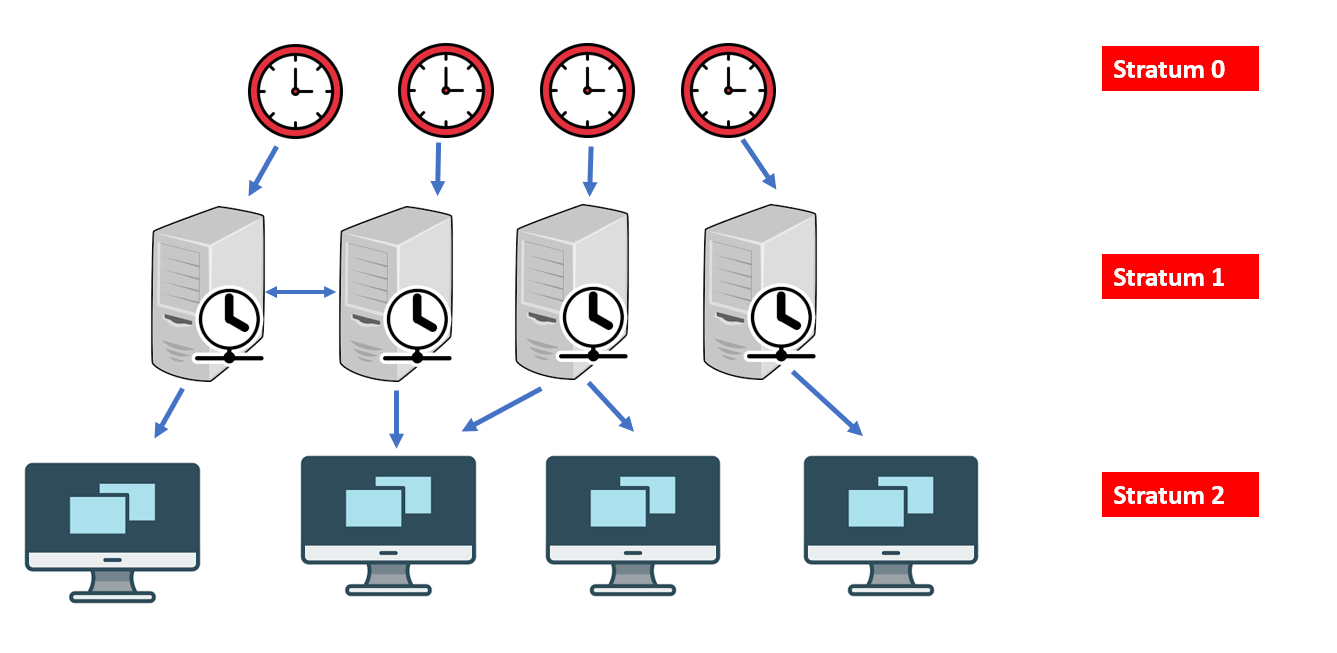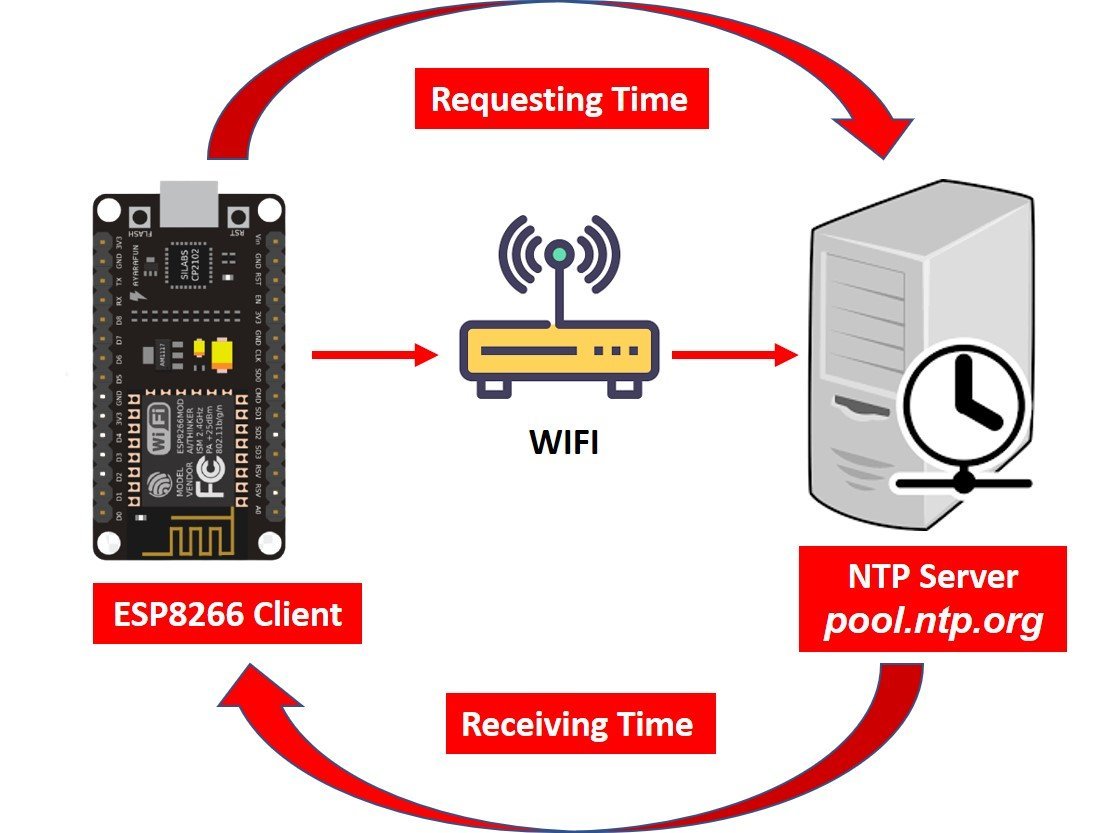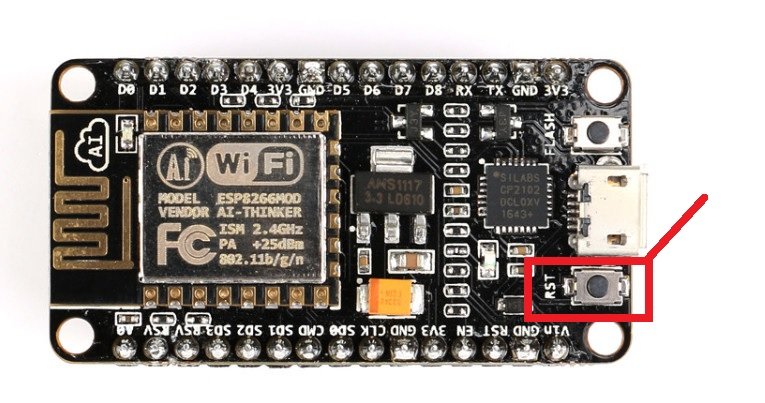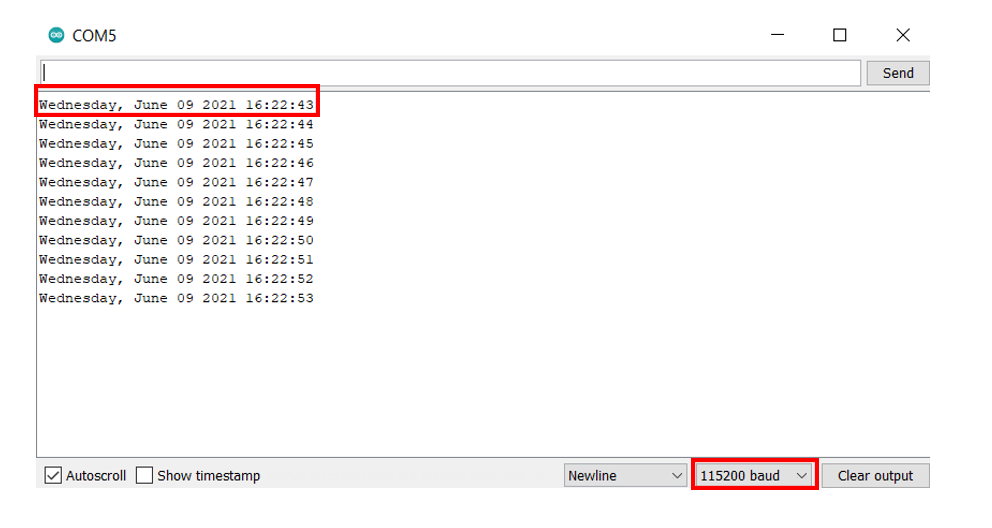In this tutorial, we will learn how to get the current date and time from the NTP server with the ESP8266 NodeMCU development board and Arduino IDE. In the data logger applications, the current date and timestamp are useful to log values along with timestamps after a specific time interval.
The time.h header file provides current updated date and time. We can update drift in RTC time using NTP server.

We have a similar guide with ESP32:
Getting Current Date and Time with ESP32 using NTP Server-Client
Why we need to use Current Date and Time?
Several times, in electronic projects we are required to work with the current time like displaying it to the user or performing certain operations at a particular time. Therefore, it is adamant to access the precise time which is not possible to obtain accurately through the generic Real-time clock (RTC) chips. Thus, a better more precise solution is to use the central server via the Internet to receive the date and time.
NTP server which is widely used worldwide provides timestamps with a precision of approximately a few milliseconds of the Coordinated Universal Time (UTC) without any supplementary hardware setup and costs. We will use the Network Time Protocol (NTP) server to request the current date and time through our local WIFI network.
Network Time Protocol (NTP)
NTP is a standard internet protocol that is widely used to synchronize computer clocks to a reference network. With a precision of approximately 50ms over the wide-area network (WAN) and less than 5ms over the local area network (LAN), it synchronizes epoch time of all networked devices to the UTC.
NTP Server Architecture
The NTP Server is based on a hierarchical structure consisting of three levels where each level is known as the stratum. In the first level (Stratum 0) there are highly precise atomic/radio clocks that provide the exact time. The second level (Stratum 1) is directly connected with the first level and thus contains the most precise time available which it receives from the first level. The third and last level (Stratum 2) is the device that makes the request to the NTP server for the date/time from the second level. In the hierarchy, each level synchronizes with the level above it.

NTP Server Working
To get the date and time with our ESP8266 NodeMCU through the NTP server, the server will operate in the client-server model. We will use the NTP server: pool.ntp.org which is easily accessible for everyone worldwide. Our ESP8266 NodeMCU development board will be the client and will connect to the NTP server through UDP on port 123. Through this port, the server (pool.ntp.org) will be able to connect with the client. The ESP8266 NodeMCU will send a request to the server after the connection will be established. When the NTP receives the request, it will transmit the time stamp containing the information regarding the time and date.

Getting Date & Time from the NTP Server
We will upload a program code in our ESP8266 NodeMCU board using Arduino IDE which will connect to the NTP server through our local network and we will request the current date and time. These values will then get displayed on our serial monitor automatically.
One thing to take into account while accessing the time for your time zone is to look for the daylight savings and the Coordinated Universal Time (UTC) offset.
If your country observes the daylight savings (click here to check) then you will have to incorporate it in the program code by adding 3600 (in seconds) otherwise it will be replaced by a 0. Pakistan does not observe daylight savings so we will add 0 in the daylight offset variable in the code.
For the UTC offset, click here to check for your time zone and add the offset in the program code by converting it in seconds.
For example, for the United States the UTC is -11:00 so converting it in seconds it becomes:
-39600 (-11*60*60).
For Pakistan, the UTC offset is +05:00 so in our code, we will specify the GMT offset which is the same as the UTC offset in seconds as 18000 (5*60*60).
Preparing Arduino IDE
Open your Arduino IDE and make sure you have the ESP8266 NodeMCU add-on already installed in it.
Recommended Reading: Install ESP8266 in Arduino IDE ( Windows, Linux, and Mac OS)
Now go to File > New and open a new file. Copy the code given below in that file and then save it.
Arduino Sketch
#include <ESP8266WiFi.h>
#include "time.h"
const char* ssid = "SSID_NAME"; //Replace with your own SSID
const char* password = "YOUR_PASSWORD"; //Replace with your own password
const char* ntpServer = "pool.ntp.org";
const long gmtOffset_sec = 18000; //Replace with your GMT offset (seconds)
const int daylightOffset_sec = 0; //Replace with your daylight offset (seconds)
void setup()
{
Serial.begin(115200);
//connect to WiFi
Serial.printf("Connecting to %s ", ssid);
WiFi.begin(ssid, password);
while (WiFi.status() != WL_CONNECTED) {
delay(500);
Serial.print(".");
}
Serial.println("CONNECTED to WIFI");
//init and get the time
configTime(gmtOffset_sec, daylightOffset_sec, ntpServer);
printLocalTime();
//disconnect WiFi as it's no longer needed
WiFi.disconnect(true);
WiFi.mode(WIFI_OFF);
}
void loop()
{
delay(1000);
printLocalTime();
}
void printLocalTime()
{
time_t rawtime;
struct tm * timeinfo;
time (&rawtime);
timeinfo = localtime (&rawtime);
Serial.println(asctime(timeinfo));
delay(1000);
}
How the Code Works?
In this section, we will understand how the code will work.
First, we will define the necessary libraries at the start of the code. We will define two libraries: ESP8266WiFi.h and time.h. The first library is required so that our ESP8266 NodeMCU board can connect with the local WIFI network and also connect with the NTP server. Moreover, the time library will help us to achieve the NTP synchronization and get the time.
#include <ESP8266WiFi.h>
#include "time.h"Then, we will create two global variables of type char which will hold the network credentials through which our ESP8266 NodeMCU module will connect. These are named ssid and password. To ensure a successful connection, replace their values with your network credentials.
const char* ssid = "SSID_NAME";
const char* password = "YOUR_PASSWORD";Next, we will define three more variables, one for the NTP server which we will specify as “pool.ntp.org” and the two others for the GMT and the daylight offset in seconds. We have specified the offsets for Pakistan but you can change them according to your time zone to obtain the correct time.
const char* ntpServer = "pool.ntp.org";
const long gmtOffset_sec = 18000; //Replace with your GMT offset (seconds)
const int daylightOffset_sec = 0; //Replace with your daylight offset (seconds)
Inside our setup() function, we will initialize the serial communication at a baud rate of 112500 as we want to display the current date and time on our serial monitor by using serial.begin().
Serial.begin(115200);The following section of code connects the ESP8266 NodeMCU module with the local network. We will call WiFi.begin() and pass the SSID and password variables inside it which we defined before.
After a successful connection has been established, the serial monitor will display the message “CONNECTED to WIFI”.
Serial.printf("Connecting to %s ", ssid);
WiFi.begin(ssid, password);
while (WiFi.status() != WL_CONNECTED) {
delay(500);
Serial.print(".");
}
Serial.println("CONNECTED to WIFI");
Next, we will use the configTime() function and pass three arguments inside it. The arguments will be the GMT offset, the daylight offset and the NTP server respectively. All of these three values were already defined by us.
configTime(gmtOffset_sec, daylightOffset_sec, ntpServer);printLocalTime()
void printLocalTime()
{
struct tm timeinfo;
if(!getLocalTime(&timeinfo)){
Serial.println("Failed to obtain time");
return;
}
Serial.println(&timeinfo, "%A, %B %d %Y %H:%M:%S");
}
Inside our infinite loop function, we will call the printLocalTime() function which will display the current time and date on our serial monitor. We will define this function by first creating a time structure named timeinfo. This will hold all the information relating to the time e.g., the number of hours/minutes/seconds.
Then, we will use the getLocaltime() function to transfer our request to the NTP server and analyze the time stamp which will be received in a human-readable format. Notice that we are passing the time structure as a parameter inside this function. By accessing the members of this time structure (timeinfo) we will acquire the current date and time which we will print on our serial monitor.
The table shows the specifiers which we can use to access a particular configuration of the date/time.
| Specifier | Description | Example |
|---|---|---|
| %A | Full weekday name | Saturday |
| %a | Abbreviated weekday name | Sat |
| %B | Full month name | January |
| %b or %h | Abbreviated month name | Jan |
| %D | Short MM/DD/YY date | 09/12/07 |
| %d | Day of the month (01-31) | 12 |
| %F | Short YYYY-MM-DD date | 2007-09-12 |
| %H | The hour in 24-hour format (00-23) | 13 |
| %I | The hour in 12-hour format (01-12) | 08 |
| %j | Day of the year (001-366) | 78 |
| %Y | Year | 2021 |
| %y | Last two digits of the year (00-99) | 21 |
| %m | Month as a decimal number (01-12) | 02 |
| %M | Minute (00-59) | 12 |
| %p | AM or PM | AM |
| %r | 12-hour clock time | 05:12:32 am |
| %R | 24-hour time HH: MM | 13:22 |
| %S | Second (00-59) | 32 |
| %T | Time format HH: MM: SS | 09:12:01 |
We will access the full weekday name, the full name of the month, day of the month, the year, the hour in the 24-h format: Minute: Second in a single line and display on our serial monitor through the line which is given below.
Serial.println(&timeinfo, "%A, %B %d %Y %H:%M:%S");Demonstration
After uploading the Arduino sketch to your ESP8266 NodeMCU module press the ENABLE button.

Now open your serial monitor and you will be able to see the current date and the time after every 1 second.

Conclusion
In conclusion, with the help of the NTP server, we can easily obtain the current time and date through our ESP8266 NodeMCU development board which is connected with a stable WIFI connection.
You can view further articles regarding Epoch time by accessing the links below:
- Getting Epoch/Unix time with ESP8266 NodeMCU through NTP server using Arduino IDE
- Getting Epoch/Unix time with ESP32 through NTP server using Arduino IDE
Additional ESP8266 NodeMCU tutorials an projects, you may like to read:
- Create Simple ESP8266 NodeMCU Web server in Arduino IDE
- Displaying Images in ESP32 and ESP8266 Web Server
- ESP8266 NodeMCU Asynchronous Web Server using Arduino IDE
- Reconnect ESP8266 NodeMCU to WIFI after Lost Connection (Solved)
- ESP32/ESP8266 Web Server to Control Outputs with a Timer (Pulse Width)
- ESP8266 NodeMCU WebSocket Server using Arduino IDE
- ESP32/ESP8266 HTTP Authentication Web Server
- ESP8266 NodeMCU Web Server using LittleFS

Excelent Tutorial, congratulações!
Hello. I get the following error when compiling this code:
‘getLocalTime’ was not declared in this scope; did you mean ‘printLocalTime’?
Where is getLocalTime defined? I cannot find it in either time.h or ESP8266WiFi.h.
Any help you could offer would be appreciated.
Thanks,
Stephen…
Hi, can you please install NTPClient library by going to library manager in Arduino IDE and search for NTPClient. After install include NTPClient.h in your program.
Same error persists after adding NTPClient.h from v3.2.1